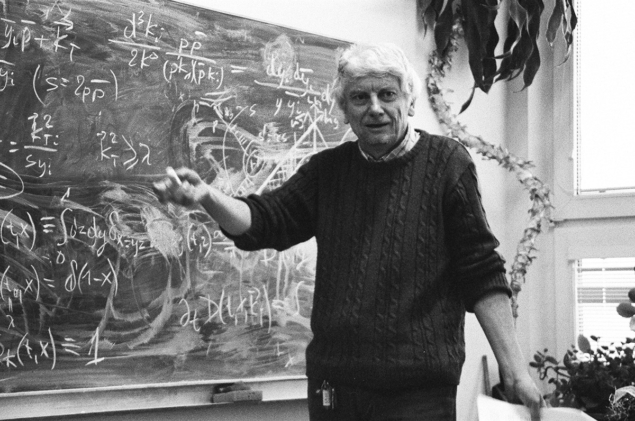
Stanisław Jadach, an outstanding theoretical physicist, died on 26 February at the age of 75. His foundational contributions to the physics programmes at LEP and the LHC, and for the proposed Future Circular Collider at CERN, have significantly helped to advance the field of elementary particle physics and its future aspirations.
Born in Czerteż, Poland, Jadach graduated in 1970 with a masters in physics from Jagiellonian University. There, he also defended his doctorate, received his habilitation degree and worked until 1992. During this period, whilst partly under martial law in Poland, Jadach took trips to Leiden, Paris, London, Stanford and Knoxville, and formed collaborations on precision theory calculations based on Monte Carlo event-generator methods. In 1992 he moved to the Institute of Nuclear Physics Polish Academy of Sciences (PAS) where, receiving the title of professor in 1994, he worked until his death.
Prior to LEP, all calculations of radiative corrections were based on first- and, later, partially second-order results. This limited the theoretical precision to the 1% level, which was unacceptable for experiment. In 1987 Jadach solved that problem in a single-author report, inspired by the classic work of Yennie, Frautschi and Suura, featuring a new calculational method for any number of photons. It was widely believed that soft-photon approximations were restricted to many photons with very low energies and that it was impossible to relate, consistently, the distributions of one or two energetic photons to those of any number of soft photons. Jadach and his colleagues solved this problem in their papers in 1989 for differential cross sections, and later in 1999 at the level of spin amplitudes. A long series of publications and computer programmes for re-summed perturbative Standard Model calculations ensued.
Most of the analysis of LEP data was based exclusively on the novel calculations provided by Jadach and his colleagues. The most important concerned the LEP luminosity measurement via Bhabha scattering, the production of lepton and quark pairs, and the production and decay of W and Z boson pairs. For the W-pair results at LEP2, Jadach and co-workers intelligently combined separate first-order calculations for the production and decay processes to achieve the necessary 0.5% theoretical accuracy, bypassing the need for full first-order calculations for the four-fermion process, which were unfeasible at the time. Contrary to what was deemed possible, Jadach and his colleagues achieved calculations that simultaneously take into account QED radiative corrections and the complete spin–spin correlation effects in the production and decay of two tau leptons. He also had success in the 1970s in novel simulations of strong interaction processes.
After LEP, Jadach turned to LHC physics. Among other novel results, he and his collaborators developed a new constrained Markovian algorithm for parton cascades, with no need to use backward evolution and predefined parton distributions, and proposed a new method, using a “physical” factorisation scheme, for combining a hard process at next-to leading order with a parton cascade, much simpler and more efficient than alternative methods.
Jadach was already updating his LEP-era calculations and software towards the increased precision of FCC-ee, and is the co-editor and co-author of a major paper delineating the need for new theoretical calculations to meet the proposed collider’s physics needs. He co-organised and participated in many physics workshops at CERN and in the preparation of comprehensive reports, starting with the famous 1989 LEP Yellow Reports.
Jadach, a member of the Polish Academy of Arts and Sciences (PAAS), received the most prestigious awards in physics in Poland: the Marie Skłodowska-Curie Prize (PAS), the Marian Mięsowicz Prize (PAAS), and the prize of the Minister of Science and Higher Education for lifetime scientific achievements. He was also a co-initiator and permanent member of the international advisory board of the RADCOR conference.
Stanisław (Staszek) was a wonderful man and mentor. Modest, gentle and sensitive, he did not judge or impose. He never refused requests and always had time for others. His professional knowledge was impressive. He knew almost everything about QED, and there were few other topics in which he was not at least knowledgeable. His erudition beyond physics was equally extensive. He is already profoundly and dearly missed.








